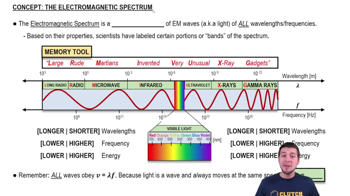Multiple Choice
Typical household wiring in the United States is 14-gauge copper wire. 14-gauge wire has a radius of . What is the electron drift speed if a current is carried in a 14-gauge wire?
1076
views
 Verified step by step guidance
Verified step by step guidance Verified video answer for a similar problem:
Verified video answer for a similar problem:



 8:17m
8:17mMaster Microscopic View of Current with a bite sized video explanation from Patrick
Start learning